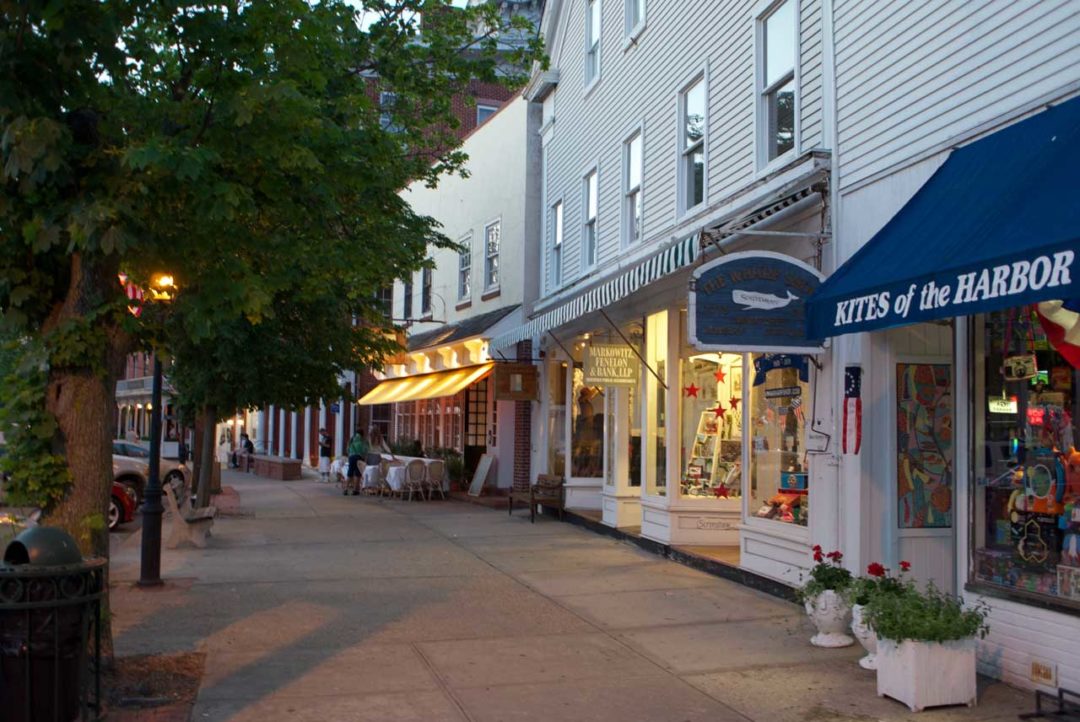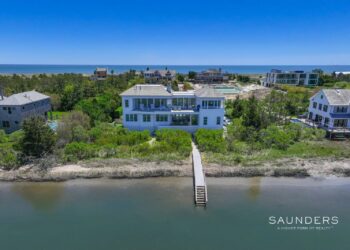
Sag Harbor is one of the most unique hamlets in the Hamptons. When it celebrated its 300-year anniversary back in 2007, I was tasked with writing a three-part series on its history. Over the last twenty years I have witnessed yet another evolution to perhaps the most “chic” place to spend an evening in the Hamptons.
Once literally a pure Indian village that was purchased by the Trustees of Southampton in the late 1600’s, it has worn many hats. First a whaling center, perhaps one of the busiest harbors in the country, then it was a factory town making watches etc. before being used in the Second World War to manufacture things like torpedoes and other military munitions.
After the war, it sorts of became a tired town. I was told during and right after the war glass and paint were scarce due to rationing and other wartime policies. Therefore, when a window broke it was not replaced but boarded up. If a building was not red brick the paint would be peeling off if there was any left at all. When the war ended slowly but surely the war industries shut down and Sag Harbor became a small dying industrial blue-collar town.
Then in the 1970’s there was yet another revival based on artist using the affordable place. A prime example is the Romany Kramoris story. She is the artist who introduced glass art to the east end. Romany told me, “When I arrived in 1977, Sag Harbor was a place with lots of small galleries and lots of fine crafts like pottery and ceramics; it was like a little Bleeker Street in Greenwich Village.”
Another prime example of this is the story of Ted Conklin and The American Hotel. Looking back, The American hotel rose from the ashes of Sag Harbor’s original hotel, The Howell Inn. Along with the Phelps Hotel, both were destroyed in the great fire of 1845. Therefore in 1846 the present building opened wisely built of bricks, many of which you still see today.
In 1972 the hotel was sold by the Young family, who owned the hotel and who lived upstairs in what is now the eight guest rooms. Ted Conklin, whose father ran a successful brass business in Westhampton back then, took a shot, going out on his own and bought the Hotel and property at the age of 22. At the time, the American Hotel building, and interior was tired and run down and looked nothing like the early American museum it is today.
Now it is a fine restaurant and historic hotel. In 1972 , Ted’s friends thought he was not doing the wisest of moves even though he purchased the hotel at a very good price. How wrong they were.
Now in the last six to seven years Sag Harbor has perhaps supplanted Montauk as the “it” place in the Hamptons. With booming restaurants, wonderful thriving art galleries, the newly rebuilt Sag Harbor Cinema not to mention the Bay Street Theater; where first class live, plays, shows, and concerts are held all year round.
Main Street, Sag Harbor is now the ultimate people watching street in the Hamptons. The historic buildings, due to codes and local laws are pristine, almost museum quality up and down the slight hill road that leads down to the docks of the super yachts and moored sailboats.
Main Street always has a healthy flow of walking folks all times of the day and night, seven days a week, 365 days a year. People exercise their prized dogs, sashay their children up and down the historic street perhaps eventually purchasing some ice cream. In fact, on a hot summer weekend, the line ups at the ice cream shops are quite long, yet the site of the happy folks coming out with ice cream in hand makes the long wait seem worthwhile.
Revival and success have caused traffic and parking situations that Sag Harbor officials have tackled rather successfully adding additional parking around the town. Still on a Saturday it could get interesting finding a spot. Isn’t that way at any really cool place in America and right now? Sag Harbor is now the “coolest” hamlet in the Hamptons.












